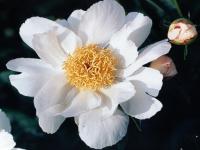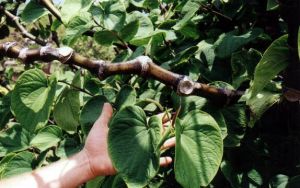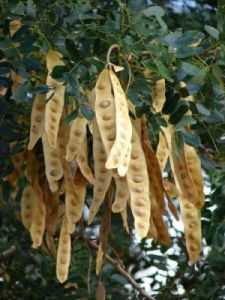
Peony, White Wings. Retrieved from: http://www.insideiris.com/feature_plants/3573/Peony__White_Wings
Botanical Name: Paeonia lactiflora
Common name: White Peony, Paonia (Bone, 2003, p. 458), Bai shae (Chinese) (Hempen & Fischer, 2007, p. 776)
Family: Paeoniaceae (Bone, 2003, p. 458)
Parts used: Root (Bone, 2003, p. 458)
Quality: Neutral, cool tendency (Hempen & Fischer, 2007, p. 776)
Constituents: Paeoniflorin (a glucoside with cagelike monoterpene structure) (Bone, 2003, p. 458)
Actions
- Sapsmolytic (Bone, 2003, p. 458)
- Skeletal muscle relaxant (Bone, 2003, p. 458)
- Anti-convulsant (Bone, 2003, p. 458)
- Anti-inflammatory (Bone, 2003, p. 458; Hempen & Fischer, 2007, p. 776)
- Sedative (Hempen & Fischer, 2007, p. 776)
- In vitro research shows active constituent paeoniflorin to inhibit testosterone synthesis in ovaries but not in adrenal glands (Bone, 2003, p. 459)
- TCM specific: tonifies blood, tonifies and nourishes jing, harmonizes and tonifies liver, relieves pain, descend yang, cools blood, moves and regulates qi and relieves spasm (Hempen & Fischer, 2007, p. 776)
Indications
- Polycystic ovarian syndrome (Bone, 2003, p. 458)
- Infertility (Bone, 2003, p. 458)
- Dysmenorrhoea (Bone, 2003, p. 458)
- Skeletal muscle cramps and spasm (Bone, 2003, p. 458)
- Fibroids (Bone, 2003, p. 458)
- Angina (Bone, 2003, p. 458)
- Epilepsy (Bone, 2003, p. 458)
- Rheumatoid arthritis (Bone, 2003, p. 458)
- Enhance memory (Bone, 2003, p. 458)
- Anti-platelet (Hempen & Fischer, 2007, p. 776)
Dosage & Preparation:
- Liquid extract (1:2): 4.5-8.5mL/day or 30-60mL/day (Bone, 2003, p. 458)
- 10-15g/day (Hempen & Fischer, 2007, p. 776)
Contraindications: In TCM the herb in contraindicated in fullness and distension in the chest, cold deficiency and diarrhoea (Hempen & Fischer, 2007, p. 777)
Combinations:
- For dysmenorrhoea combine with licorice (Bone, 2003, p. 458)
- For skeletal muscle cramps and spasm combine with licorice (Bone, 2003, p. 458)
- For fibroids, combine with Paeonia suffructicosa, Poria cocos, Cinnamomum cassia and Prunus persica (Bone, 2003, p. 458)
- For angina combine with Stervia rebaudiana and ginsenosides (Bone, 2003, p. 458)
- For epilepsy combine with licorice and fossilized mammalian tooth (Bone, 2003, p. 458)
Interactions:
- Use with caution in combination with barbiturates and sedatives (Hempen & Fischer, 2007, p. 776)
- Use with cation in combination with anti-coagulants and anti-platelet medications (Hempen & Fischer, 2007, p. 776)

